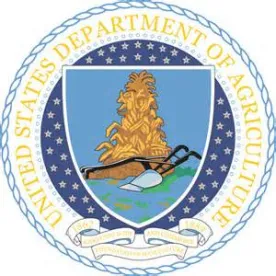The United States Department of Agriculture’s Agricultural Marketing Service (USDA-AMS) published its final rule establishing the Domestic Hemp Production Program on January 19, 2021, effective March 22, 2021. The final rule supersedes the interim regulations issued by USDA on October 31, 2019, in response to the 2018 Farm Bill, which directed USDA to establish a national regulatory framework for hemp production in the United States.
Given the final rule’s timing, it is likely that it will be subject to a regulatory freeze on the first day of the Biden Administration, January 20, 2021. This freeze may provide additional opportunities for stakeholders to work with the new administration on issues with the Domestic Hemp Production Program.
Stakeholders in the industry welcomed the much-needed guidance that the interim regulations provided in 2019, but also identified several concerns. AMS made a number of improvements in the 301-page final rule in response to the thousands of comments received on the interim regulations and lessons learned during the 2020 growing season. These include:
-
Negligent violations – Producers must dispose of hemp plants that exceed the acceptable delta-9 tetrahydrocannabinol (THC) level, which remains at no more than 0.3 percent THC on a dry weight basis. The producer will only commit a negligent violation, however, if plants test above the separately established “negligent threshold.” The final rule increases the negligent threshold from the interim regulation’s level of .5 percent to 1 percent. This means that hemp that tests above 0.3 percent but below 1 percent THC will not be considered a negligent violation, although it will still need to be disposed or remediated.
-
Disposal and remediation of noncompliant plants – The interim regulations required that non-compliant hemp must be collected for destruction by a person authorized under the Controlled Substances Act, 21 U.S.C. § 801, et seq., to handle marijuana, such as a Drug Enforcement Administration (DEA) registered reverse distributor or a duly authorized federal, state, or local law enforcement officer. In the final rule, AMS incorporates the flexibilities for disposal that were announced in guidance on February 27, 2020. Some of these new options include, but are not limited to, plowing under non-compliant plants, composting into “green manure” for use on the same land, tilling, disking, burial, or burning. AMS notes in its final rule that one of the top considerations in making this change was to minimize the resource impact on enforcement authorities.
-
Testing using DEA-registered laboratories – The interim regulations required use of only DEA-registered labs to conduct testing of the THC content of hemp crops. This has been a significant issue for stakeholders, as there were an insufficient number of DEA-registered laboratories to test all the hemp produced 2020 and anticipated to be produced 2021. Because of this, in February 27, 2020 guidance, AMS announced enforcement of this requirement would be delayed. In the final rule, AMS indicates that, in consultation with the U.S. Department of Justice, AMS determined it must retain the provisional requirement for laboratories testing hemp to be registered with DEA. However, because of the current insufficient number of DEA-registered laboratories, DEA will delay enforcement of this requirement until December 31, 2022 while it processes requests from numerous laboratories with pending registration applications.
-
Timing of sample collection – The interim regulations required that state plans outline procedures for the effective and accurate sampling and testing of hemp for THC concentration levels, and provided that samples must be collected within fifteen days of the anticipated date of harvest by a federal, state, local, or tribal law enforcement agency or other designated person. The final rule extends this requirement to 30 days before harvest.
-
Sampling method– Several stakeholders commented that samples should be taken from a greater part of the plant or the entire plant, and requested sampling from a smaller number of plants. The final rule allow states and tribes to adopt a performance-based approach to sampling in their plans. A performance-based approach simply sets a performance objective (e.g., reliability of 95 percent) and allows the states and tribes considerable freedom in how to achieve that reliability objective with their sampling methodology.
-
Extent of Tribal Regulatory Authority over the Territory of the Indian Tribe – The final rule provides that a tribe may exercise jurisdiction and regulatory authority over the production of hemp throughout its territory regardless of the extent of its inherent regulatory authority.
Again, although it is likely that this final rule will be subject to the Biden Administration’s regulatory freeze, it provides helpful insight into AMS’s current thinking on the Domestic Hemp Production Program.






 />i
/>i
